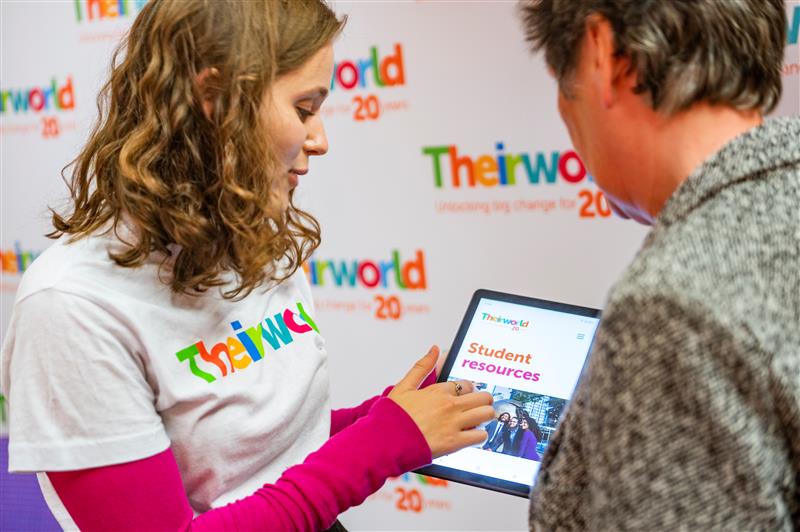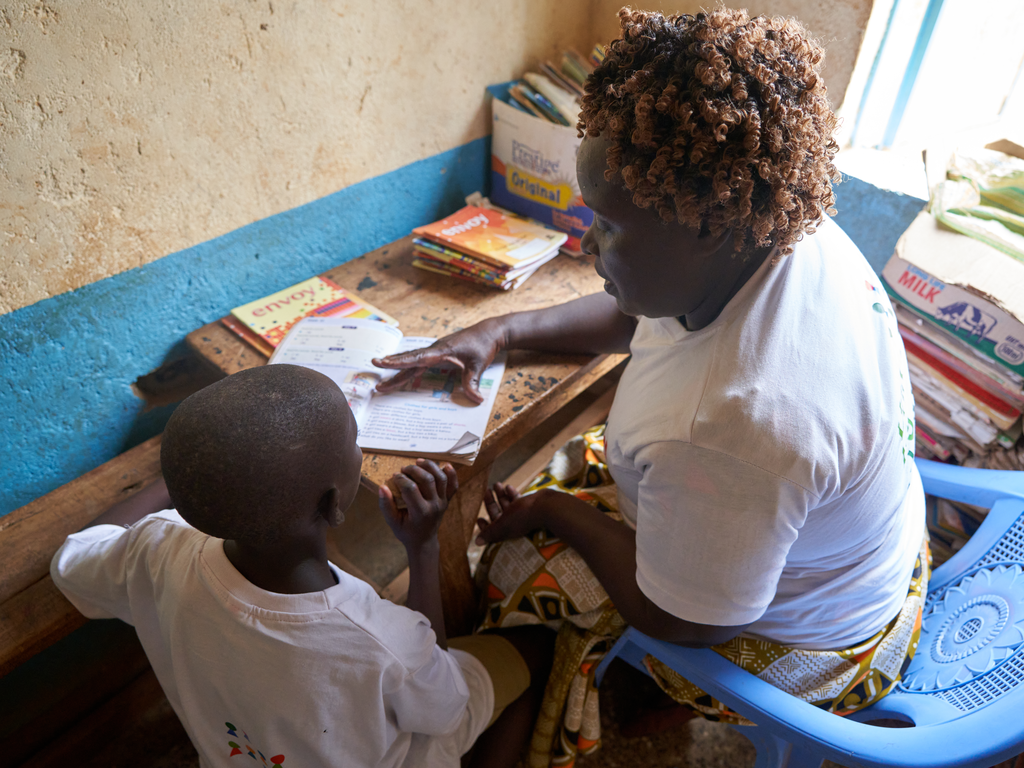
Why teaching them in their own language could help 500m children to stay in school and succeed
Barriers to education, Right to education, Teachers and learning
There is growing evidence that children taught first in their home languages - before acquiring additional languages - become better learners and are more likely to stay in school.
More than 500 million children are taught at school in a language they don’t speak at home.
That’s half of all the primary and secondary school-aged children in low and middle-income countries. In sub-Saharan Africa, the figure rises to over 90%, according to the Education Commission’s report on global education in September.
When the language of the classroom is a barrier to education, the inevitable result is poor education quality, low literacy and high dropout rates.
In fact, language may be one of the biggest barriers to children accessing learning. According to a World Bank study in the mid-2000s, as many as half of out-of-school children live in communities where the language of schooling is not used at home.
There is growing evidence that children taught first in their home languages – before acquiring additional languages – become better learners and are more likely to stay in school.
Against this backdrop, mother tongue-based learning has steadily achieved recognition and has been consistently incorporated in the Education Framework for Action – the United Nations roadmap to achieving the Sustainable Development Goal of inclusive and equitable education for all.
Nevertheless, there are still many obstacles to it becoming a reality in education policies and in classrooms worldwide, according to education consultant Helen Pinnock.
“There is more recognition of the importance of mother tongue-based, multilingual education (MTB-MLE) – but it’s still not central enough,” she said.
Pinnock’s work focuses on inclusive education in low and middle-income countries. She spent nine years with Save The Children as an education adviser across Africa and Asia – and produced several policy guides on MTB-MLE strategies.
Despite gaining ground, this form of learning is routinely overlooked by education ministries or in aid programmes because of a lack of understanding.
“Country leaderships are not that interested (in MTB-MLE) so do not make a real push for it,” said Pinnock, adding that having more people from multilingual backgrounds in positions of influence on education policy would make a difference.
There is a perception in many developing countries that children need to learn an international language in order to succeed at life and that an English or American education model is inherently better, she said.
“People think you have to choose a language – but really you have to choose how to teach children to learn. It is not English or another language – English should be part of multilingual education.”
At the same time, “the development industry is language blind,” said Pinnock. She would like to see donors make mother tongue-based learning a condition of education aid – and aid recipients ask for funds to cover the associated costs, such as teacher training in home languages, and textbooks.
“The problem is that donors don’t have confidence in teachers – teacher training needs to be multilingual,” she added.
Pinnock is among education reformers who, alongside UNESCO – with its Mother Language Day – and other agencies, have long pushed for mother tongue learning to be at the heart of education policy. They are supported by numerous studies into child literacy that show children learn faster in their mother tongue and are more likely to stay at school.
One notable success story is the Philippines, whose government began rolling out a reform of its education system in 2012. It was initially aimed at protecting the language of minority groups – more than 170 languages are spoken in the archipelago.
Teaching material was provided in local languages and literacy scores went up in Filipino by 38% and English by 31%.
Many people know what it is like to struggle in school. Others know what it is like to be forced to drop out. For many children, this deep frustration and disappointment is not caused by physical or monetary barriers, but by the decision to teach in a language which they do not understand. Dr Rigoberta Menchú, Nobel Peace Laureate - in the foreword to Education and Language: The Missing Link
In Ethiopia, according to a policy brief by the Global Campaign for Education (GCE), local language policy – which combines long-term mother tongue instruction with Amharic and English – has reduced dropout rates and led to higher retention.
In Guatemala, grade repetition in bilingual schools is about half of that in traditional schools, and dropout rates are about 25% lower.
At the same time, the consequences of neglecting mother-tongue learning go beyond the classroom.
Pinnock said research shows that teaching children first in a language such as English can worsen inequalities – because not all children get equal exposure to it. Neglecting the language that a child’s identity is rooted in can have damaging psychological and cultural effects.
Such consequences were laid bare in a 2009 report entitled Language and Education: The Missing Link by Save the Children and the GCE. It found that the risk of conflict and instability was most serious in countries that were linguistically fractionalised, such as South Sudan.
In a situation where some groups do poorly in education because their language is not used at school, these divisions are likely to be heightened, it said.
Given what is at stake, how can the global education community ensure that mother-tongue learning is part of the framework for a new learning generation?

Money should not necessarily be seen as a barrier to implementing MTB-MLE, said Pinnock. She cited the example of Papua New Guinea, where local community teachers are trained to pass on basic education skills effectively, illustrating how cost-effective such methods can be.
However, financing for teacher training in their mother tongue and even research questions for children in their own language must be provided for.
In an email interview, the GCE pointed out the need for education authorities to sidestep the centralised bulk purchasing of textbooks from major education businesses and create learning material in children’s mother tongue languages.
The GCE also pointed to the need to not only give teachers adequate training and support but to pay attention to where they are deployed, based on their own language.
Only by making mother tongue education a priority, the coalition said, “can governments truly deliver an education that is inclusive, that fulfils the basic right to education and ensures they are delivering their commitment to the Sustainable Development Goals”.
Without the political will from governments, however, millions of children are likely to drop out of learning because they cannot understand what is said in the classroom. And that will have far-reaching consequences for their lives and communities.
Implications of school language
- Children in rural locations are much more likely to drop out of school unless they can learn in their first language
- In all settings, children perform worse across the curriculum when their first language is not used to teach
- Children do badly in an national or international language which is used for teaching if they do not use it at home
- Children never become fully literate if they do not already know the language of literacy well
- Children may never make it into secondary education if they struggle with language in primary school, even though by their teens their ability to learn advanced second language might be greater
Source: Language and Education: The Missing Link (Save The Children/CfBT Trust, report by Helen Pinnock)
More news

Take the test and discover how our Schools Hub helps students grasp the global education crisis
